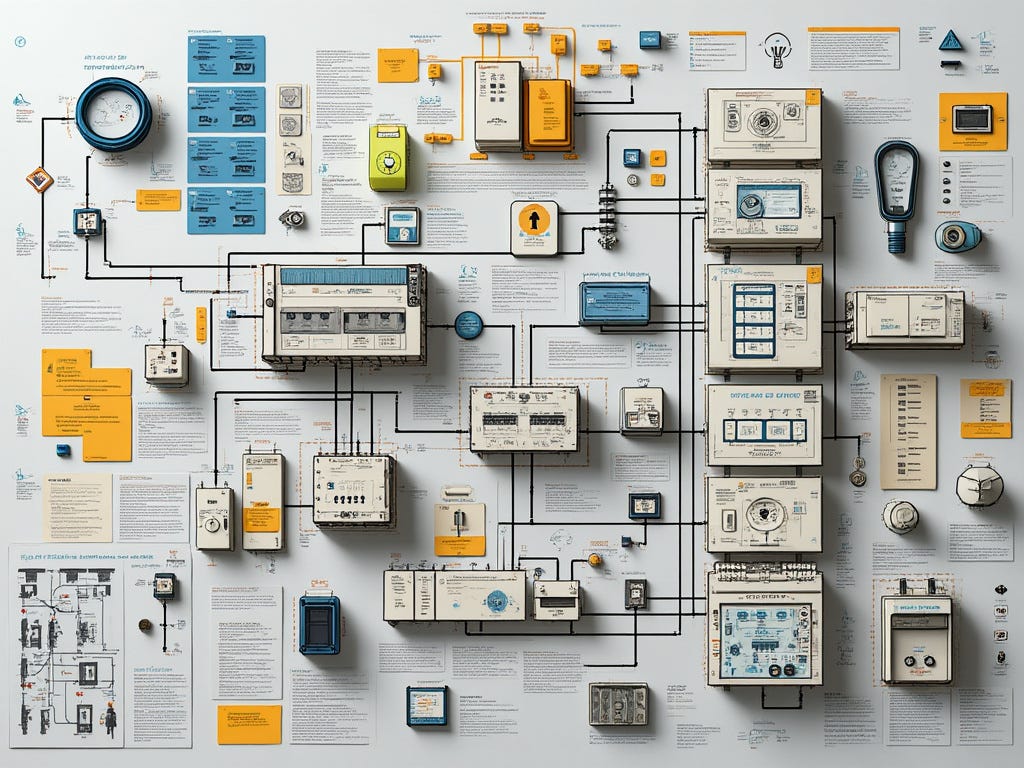Key concepts of System design
A practical guide
I want to walk through a comprehensive checklist of critical points to consider when designing a system.
I'll proceed in a logical order and delve deep into each chapter over the coming weeks. This exploration will be somewhat freeform, not strictly adhering to a single methodology. Instead, drawing from my professional experience with various frameworks, I'll blend the most effective approaches I've encountered throughout my career.
As a practical foundation for our discussion, I've chosen to design a Discord Clone. This example will help illustrate the system design process concretely.
Let me be clear: this won't be an exhaustive, all-encompassing guide. Rather, it's intended to provide insights into the system design thought process and methodology.
I'll outline the main steps and explore potential parameters and considerations for the initial phases of our design.
What exactly do I mean by "steps"?
Here is the list:
Define the Problem
Gather and Prioritize Requirements
Analyze Constraints
System Context
System Design
Technology Selection and deployment view
Cross cutting concerns
Prototyping and Validation
Documenting the System
Deployment Strategy
Monitoring and Maintenance
I won't go through the whole list in a single article because it would take you way too much time to read and digest. Instead, I'm planning a bi-weekly series where we'll systematically break down our Discord Clone design.
Every two weeks, I'll publish a new piece that dives deep into a specific aspect of system design. This approach will give you time to really understand the nuances without getting overwhelmed.
Interested in following this bi-weekly journey?
Now that we have an idea of the daunting task that is waiting us, we can start our deep dive with chapter 1.
1. Define the problem
1.1. Understand What We're Building
Let's get real about building a Discord clone. This isn't just another messaging app – it's a complex communication ecosystem that needs to handle everything from casual chat to massive community interactions. At its core, Discord is a **real-time communication platform** that goes beyond simple messaging.
What makes Discord special? Let's break it down:
- Real-Time Interaction: We're talking about supporting millions of users simultaneously, with communication so smooth it feels like you're in the same room.
- Community-Driven Design: Users can create entire worlds – private hangouts or massive public servers that feel like living, breathing digital spaces.
- Multi-Platform Magic: Whether you're on a smartphone, laptop, or desktop, the experience needs to be seamless.
- Scalability and Reliability: The system should be rock-solid. No crashes, no downtime, just pure, uninterrupted communication.
Our challenge? Recreate this functionality while keeping the system bulletproof. We're looking at solving some serious technical puzzles: **real-time messaging** that feels instantaneous, potentially **voice/video streaming** that doesn't skip a beat, and an **infrastructure** that can scale globally without breaking a sweat.
We will not go through the whole pletora of possible functionality here in detail. First because it will take ages and second because we are putting the attention to the aspect of the functionality that can heavily impact the actual design of the system.
Chapter 2 is all about Requirements: Building the Blueprint
2. Gather and Prioritize Requirements
2.1. Functional Requirements
For our design journey, we'll concentrate on the aspects that have the most significant impact on system architecture. While authentication is necessary, the real-time communication components will be our primary focus.
Our focused functional requirements:
- Real-time text and voice communication
- Multi-chat channels (from single person to large groups, without user limit)
2.2. Non-Functional Requirements
This is where system architects dive into the critical parameters that define the system's core capabilities. We're addressing scalability, availability, performance, and security.
Our design parameters:
- Scalability: Handle 1M+ concurrent users
- Availability: 99.99% uptime
- Performance: Sub-100ms message delivery latency
- Security: End-to-end encryption for messages
2.3. Stakeholders
Key system participants:
- Users
- Administrators
- Developers
- Business Owners
2.4. BONUS - Documentation
There will be an entire section on documenting your architecture but it is worth mentioning how and what you should document when describing requirement at architecture level.
It is important to have an idea of the main use cases and general functionality.
For the use cases we can use a UML use case diagram, we don't need to go in great detail but the main use cases should be clear to identify where the heavy load could be.
This are the main use case of our real time chat app, I for sure forgot a lot of them but we this is the classic thing than can be revised in the future.
Is also worth it to have a general idea of the big picture, this is what we did at the beginning of this section for the heavy weight functionalities.
One important part of designing a system is to have a list of quality goals.
The quality goals should be overarching the single components and be of grater importance for all the main stakeholders and user of the system.
Here an example
Quality Goals: Guiding Architectural Decisions
Q1 Maintainability
Support for future feature integration. Potential expansions include chat archiving and advanced communication features.
Q2 Performance
Ensure smooth user experience with minimal latency. Target: message delivery under 0.5 seconds.
Q3 Scalability
Design infrastructure to support continuous user base growth while maintaining performance standards.
Stakeholder Tracking
A comprehensive list detailing names, roles, and communication channels.
These are the first two chapters. Nothing deeply technical yet, but this is an essential part of our job. Not everything is about patterns and optimization. We need to understand the problem as thoroughly as possible with the available information.
In two weeks, we'll dive deeper and explore the constraints and context of the system we're trying to model. Stay tuned for the next installment of our system design journey.



